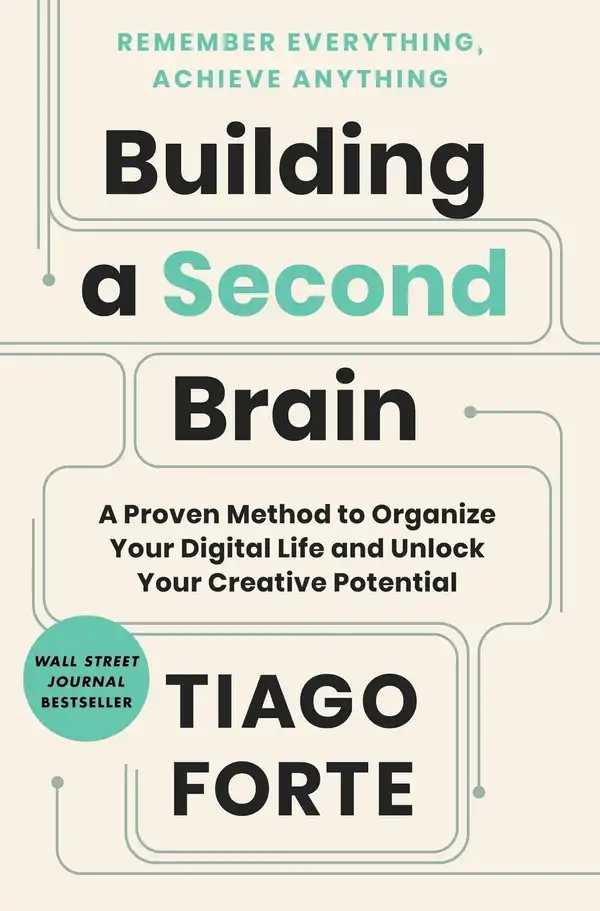Highlights
- Your mind is for having ideas, not holding them.
- The media landscape of today is oriented toward what is novel and public—the latest political controversy, the new celebrity scandal, or the viral meme of the day. Resurrecting the commonplace book allows us to stem the tide, shifting our relationship with information toward the timeless and the private.
- if a piece of content has been interpreted through your lens, curated according to your taste, translated into your own words, or drawn from your life experience, and stored in a secure place, then it qualifies as a note.
- In our Second Brain we can do the same: mix up the order of our ideas until something unexpected emerges. The more diverse and unusual the material you put into it in the first place, the more original the connections that will emerge.
- Having a Second Brain where lots of ideas can be permanently saved for the long term turns the passage of time into your friend, instead of your enemy.
- When you feel stuck in your creative pursuits, it doesn’t mean that there’s something wrong with you. You haven’t lost your touch or run out of creative juice. It just means you don’t yet have enough raw material to work with.
- Every time you take a note, ask yourself, “How can I make this as useful as possible for my future self?” That question will lead you to annotate the words and phrases that explain why you saved a note, what you were thinking, and what exactly caught your attention.
- Information becomes knowledge—personal, embodied, verified—only when we put it to use. You gain confidence in what you know only when you know that it works. Until you do, it’s just a theory.
- Instead of trying to find “the best” content, I recommend instead switching your focus to making things, which is far more satisfying.
- There is a way out of this situation. It starts with realizing that in any piece of content, the value is not evenly distributed.
- By playing with ideas—bending and stretching and remixing them—we become less attached to the way they were originally presented and can borrow certain aspects or elements to use in our own work.
- When something resonates with us, it is our emotion-based, intuitive mind telling us it is interesting before our logical mind can explain why.
- Writing creates new knowledge that wasn’t there before. Each word you write triggers mental cascades and internal associations, leading to further ideas, all of which can come tumbling out onto the page or screen.
- Be regular and orderly in your life so that you may be violent and original in your work.
- Gardens are natural, but they don’t happen by accident. They require a caretaker to seed the plants, trim the weeds, and shape the paths winding through them.
- The goal of organizing our knowledge is to move our goals forward, not get a PhD in notetaking. Knowledge is best applied through execution, which means whatever doesn’t help you make progress on your projects is probably detracting from them.
- Instead of organizing ideas according to where they come from, I recommend organizing them according to where they are going—specifically, the outcomes that they can help you realize.
- The true test of whether a piece of knowledge is valuable is not whether it is perfectly organized and neatly labeled, but whether it can have an impact on someone or something that matters to you.
- In this sense, notetaking is like time travel—you are sending packets of knowledge through time to your future self.
- Progressive Summarization is not a method for remembering as much as possible—it is a method for forgetting as much as possible.
- Our creativity thrives on examples. When we have a template to fill in, our ideas are channeled into useful forms instead of splattered around haphazardly.
- These are some of the most valuable connections—when an idea crosses the boundaries between subjects. They can’t be planned or predicted. They can emerge only when many kinds of ideas in different shapes and sizes are mixed together.
- The more imaginative and curious you are, the more diverse your interests, and the higher your standards and commitment to perfection, the more difficult you will likely find it to switch from divergence mode into convergence mode.
- Tags: learning strategy thinking
- Waiting until you have everything ready before getting started is like sitting in your car and waiting to leave your driveway until all the traffic lights across town are green at the same time.
- Our attitude toward information profoundly shapes how we see and understand the world and our place in it. Our success in the workforce depends on our ability to make use of information more effectively and to think better, smarter, faster.
- The process of knowing yourself can seem mystical, but I see it as eminently practical. It starts with noticing what resonates with you.

Table of contents